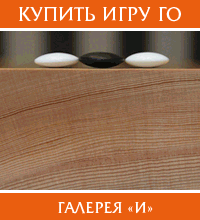This is the site of Yakutsk department of Go Federation.
At the left side you can see a lot of links leading to the top Russian sites dedicated to the game of Go.
We are glad to invite you come into our Go images gallery. If you have any questions to discuss, please visit our International Go Weiqi Baduk Forum.
If you’d like to ask more about Go game, Weiqi and Baduk in Russia, please write: go@weiqi.ru.
Yakutsk is the capital of the Sakha (Yakutia) Republic (formerly the Yakut Autonomous Soviet Socialist Republic), Russia and a major port on the Lena River.
It is also a highway center and has tanneries, sawmills, and brickworks. Yakutsk was founded in 1632 as a Cossack fort but did not grow into a city until the discovery of large reserves of gold and other minerals in the 1880s and 1890s. These reserves were developed extensively during the industrialisation under Stalin and the rapid growth of forced labour camps in Siberia also encouraged Yakutsk’s development.
The city has a university (founded 1956) and a branch of the Russian Academy of Sciences, which contains, among others, the Institute of Cosmophysical Research, which runs the Yakutsk Extensive Air Shower installation (one of the largest cosmic-ray detector arrays in the world), and the Permafrost Research Institute developed with the aim of solving the serious and costly problems associated with construction of buildings on frozen soil.
Yakutsk is also home to Sakha theater and the Museum of Mammoth. It has offices of many mining companies, including ALROSA, whose diamond mines in Yakutia account for about 20% of the world’s rough diamond output.
Yakutsk is one of the coldest cities on earth, with January temperatures regularly remaining below -40 °C (-40 °F). The coldest temperatures ever recorded outside Antarctica occur in the basin of the Yana River to the northeast. Despite this however, July temperatures can often exceed 30 °C (86 °F), making the region among the greatest in the world for seasonal temperature differentials. Yakutsk is the biggest city built on continuous permafrost. Most houses are built on concrete piles.
The Lena River runs through the city, and in the summer there are various boat cruises offered, including upriver to the Lena Pillars, and downriver which visit spectacular scenery in the lower reaches and the Lena Delta.
Просмотров: 6 105

